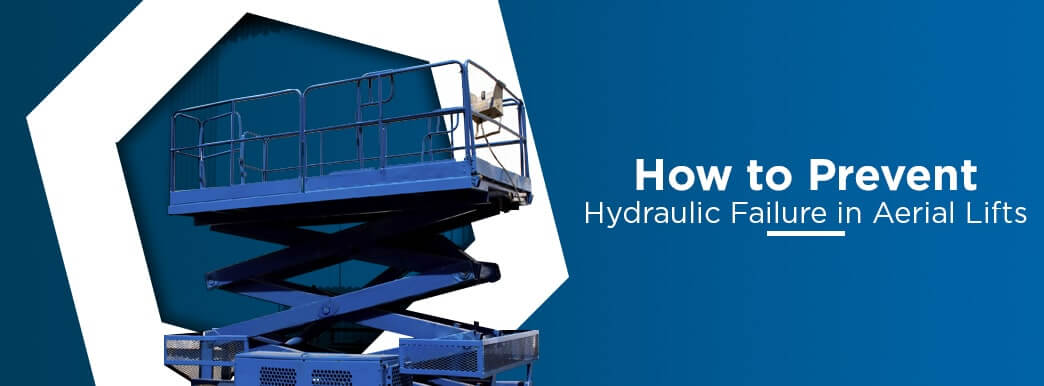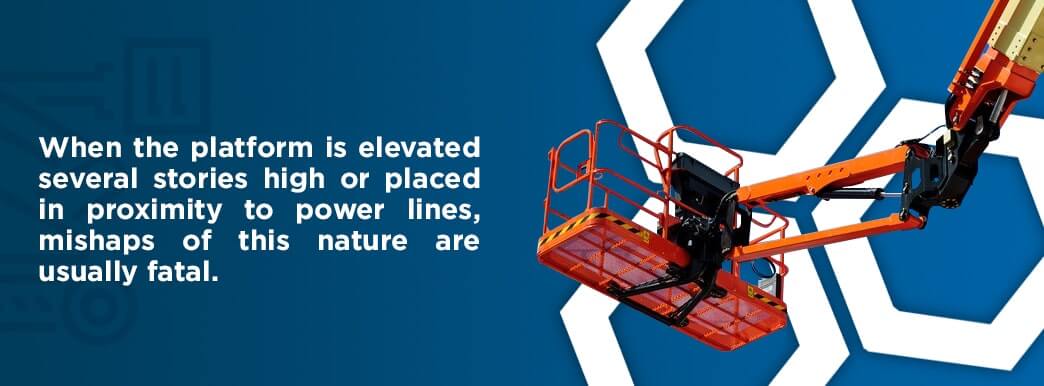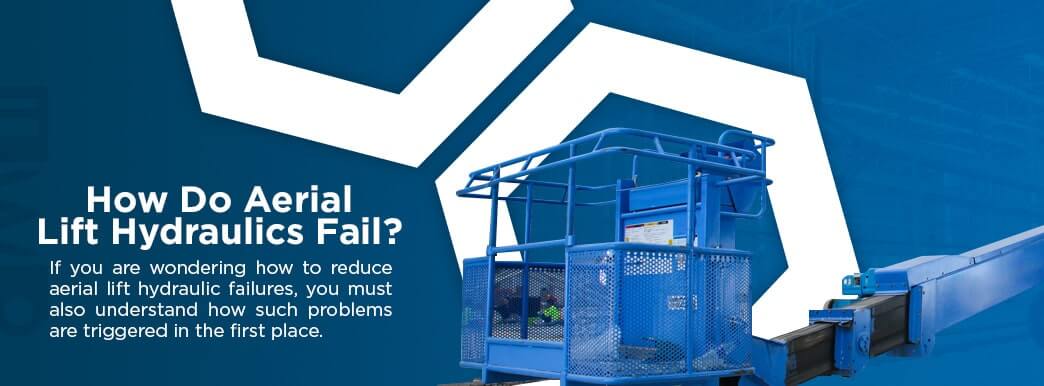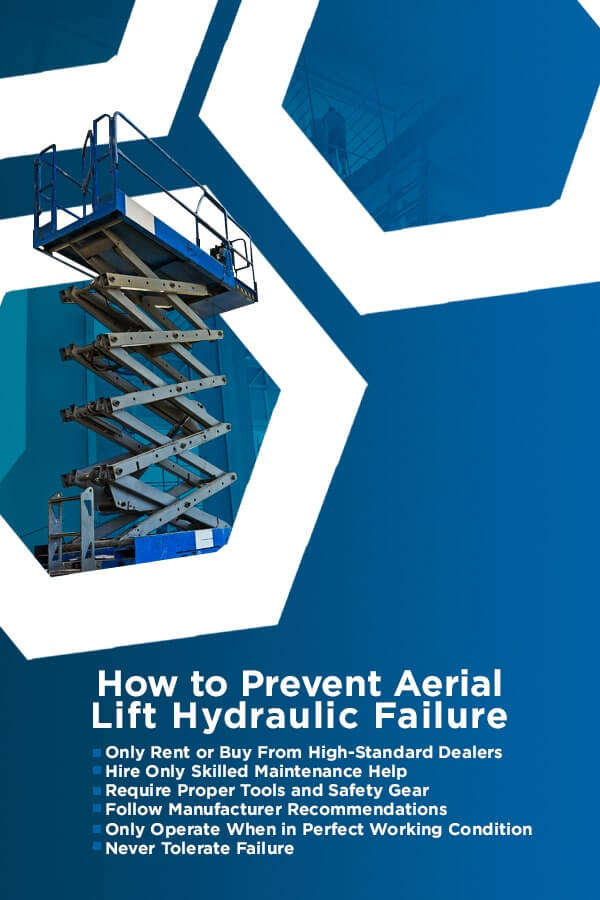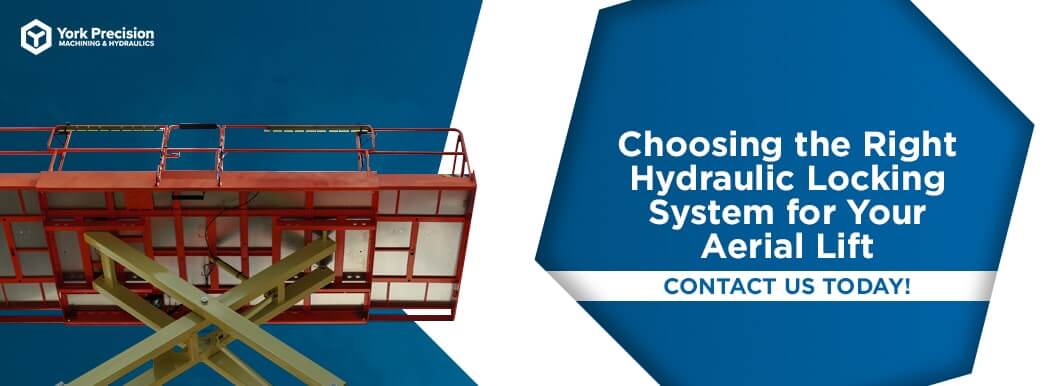If you operate an aerial lift, it is crucial to know the warning signs of issues brought on by hydraulic failure.
Here's how you can prevent costly and tragic accidents from happening before people get injured and before equipment becomes damaged beyond repair.
Common Injuries That Occur With Aerial Lifts
The leading causes of injury on an aerial lift are the result of platform tip-overs, ejections and caught-between accidents. When the platform is elevated several stories high or placed in proximity to power lines, mishaps of this nature are usually fatal. When a worker falls or is thrown from an elevated platform, broken joints and possible paralysis are among the common injuries of surviving victims. If aerial platform jolts or slants at an elevation of 50 feet or more, injury to a fallen worker is almost certain.
A worker can also be injured while standing on an aerial platform between roof joists. If the platform jolts, the worker could be caught between the joists, causing bodily injury or possible death. Overall, 26 people on average die from lift-related accidents per year. Electrocutions account for a fourth of all fatalities and falls cause another 15 percent.
Common Issues With Aerial Lifts
Hydraulic systems on aerial lifts must be correctly maintained to optimize safety on the workforce. While there are ways to improve hydraulic lift safety, you must also understand the problems that can result from inaction.
1. Cylinder Replacement Mishaps
Hydraulic fluid supports the platforms on an airlift, thereby making it essential for a platform to be properly secured during maintenance tasks that involve cylinder replacement. This can be dangerous on a machine where the cylinder can only be accessed if the platform is slightly elevated, especially if you have an unknowledgeable maintenance worker who doesn’t know that the cylinder supports the platform.
A grim scenario could involve a makeshift elevation, placed under the scissor-lift to gain access to the cylinder. After the new cylinder is installed, the worker might remove the supports to test the machine, only to suffer major injuries while reaching under as the platform collapses.
2. Defective Boom-Swing Mechanism
On an aerial lift, the boom-swing mechanism is crucial for smooth movement when the platform is suspended in the air. This is especially critical when the platform is raised in proximity to dangerous working environments, such as power lines. If the boom-swing mechanism malfunctions due to faulty valve activation, it could cause the platform to lunge unexpectedly.
In a worst-case scenario, the boom-swing mechanism could malfunction when a worker is elevated near a power line. To prevent this from happening, no errors in the boom-swing function should be tolerated. If your aerial platform lunges unexpectedly, refrain from using the machine until the boom-swing issue is inspected, diagnosed, repaired and tested.
3. Unsecured Platforms
For an aerial forklift to be safe and stable for workers, the platform must be secured with guardrails to stop workers from stepping too far when elevated at great heights. The platform itself must also be tightly secured to the fork or lifting carriage to prevent the platform from tilting sideways or leaning forward at high elevations.
4. Plummeting Lifts
A hydraulic lift system should never be lowered any faster than 135 feet per minute. If the aerial lift fails and needs to be lowered to the ground, the lift should be lowered slowly, preferably under the 135 feet speed limit. An aerial lift should be designed not to exceed that speed in any situation, whether working correctly or malfunctioning.
5. Unoccupied Driver’s Seat
The driver’s seat of a hydraulic aerial lift must be occupied at all times by a licensed operator while the lift is manned or elevated. Under no circumstances should the driver’s seat be vacated for any length of time while the platform is suspended in elevation or in the process of being raised or lowered, regardless of whether the platform is occupied. The space between a mast and the worker on the elevated platform must be shielded to prevent the possibility of dangerous contact.
When the platform is occupied, the forklift must never travel from one point to another if the lift is elevated more than 4 feet from the ground. The only exception is in a case where an occupied platform is raised up in the air, only to be inches away from the intended connecting point — such as a ledge or mast — and the worker must be inched closer to safely make the step.
Types of Scissor and Boom Lift Accidents
Scissor and boom lifts are essential pieces of equipment used in construction or maintenance projects where personnel are required to work at height. However, using these lifts can pose several safety risks which may lead to injuries or fatalities. Some notable types of scissor and boom lift accidents include:
1. Tip-Overs
Scissor and boom lifts should always be set on level ground since the machinery can lose stability and tip over on an unsteady or uneven surface. Aside from unstable surfaces, tip-overs can occur when bad weather conditions, such as high winds or heavy rain, cause a load to become unbalanced and shift to one side. Exceeding the weight limit can also overload the lift, causing it to break or tip over.
Workers must be trained to identify tip-over hazards — such as unlevel surfaces or unfavorable weather conditions — and have procedures to address those issues prior to an emergency. In addition, wearing protective gear should be a priority, since it reduces risks in the event of an accident.
2. Falls
Falls are among the most common aerial lift accidents that occur on-site. According to the Centers for Disease Control and Prevention, 200 construction workers die each year due to fall accidents in the United States. Falls happen for a number of reasons, including:
- Improperly secured machinery
- Workers leaning over guardrails
- Working during high winds or on unstable ground
- Lack of proper safety restraints
- Workers not wearing protective or fall-prevention gear
- Falling objects
- Machinery defects due to lack of maintenance
3. Electrocution
Boom and scissor lifts elevate workers to heights which sometimes reach power lines. Accidental contact with overhead powerlines can cause electrocution, leading to injuries or fatalities. Electrocution can happen when an aerial lift worker or piece of equipment directly touches the power line.
Ensuring the lift is adequately insulated and kept at a safe distance from electrical lines is crucial. Additionally, personnel should wear the appropriate protective gear and be trained to identify electrical hazards to prevent electrocution incidents.
4. Collapsing Materials
Workers can sustain injuries from collapsing building materials or falling objects when completing maintenance or working around unfinished structures. Materials can collapse when workers contact loose objects, causing them to crumble and fall. For this reason, personnel must be made aware of loose material and take the necessary measures to avoid accidents.
5. Entrapment
Personnel becoming trapped between aerial lifts and other objects is another common occurrence which can lead to injury or death. Entrapment can happen when a lift's bucket is moved and workers are unaware of their surroundings. Inspecting the site for potential hazards beforehand can help ensure that workers are at a safe distance from the load.
Implementing safety procedures is critical for minimizing accidents and keeping workers safe while using aerial lifts. On top of training workers, equipment safety can be increased using a reliable locking system for the hydraulic components. The Bear-Loc ® is a fail-safe solution with an outstanding load-holding capacity to support your lifting needs and a positive locking feature to increase the safety of your high-performing aerial lifts.
How Do Aerial Lift Hydraulics Fail?
If you are wondering how to reduce aerial lift hydraulic failures, you must also understand how such problems are triggered in the first place. Knowing this can help you improve aerial lift hydraulic systems and prevent accidents in the future.
1. Damaged Hydraulic Lines
If a hydraulic line lacks proper routing, it could become frayed and dangerous due to vibrations and other undesired movements. This can be prevented if the lines are reinforced with protective brackets and clamps, which help to route lines properly and improve worker safety.
Lines can also fail as a result of pressures that exceed the operating tolerances that lines are designed to sustain. You can prevent this from happening by selecting lines that are rated beyond the anticipated pressure levels of possible surges within your working environment. Lines should also be selected with sufficient tolerance for the highest possible temperature extremes.
2. Contamination of Hydraulic Fluids
One of the greatest causes of danger and failure on an aerial lift is contamination within the hydraulic system. Contamination happens when impurities make their way into the hydraulic fluid. For example, when dirt and debris enter the hydraulic pump, it obstructs the system and prevents the flow of vital fluids.
When dirt and water enter the hydraulic fluid, it ruins the purity and viscosity of the fluid, which is then unable to fuel the engine correctly. Once the fluid loses its viscosity, the system parts are denied sufficient lubrication. As the moving metal parts grind against one another, the resulting friction leads to system failure.
3. Hydraulic Seal Failure
Another major cause of system failure and mechanical malfunctions on an aerial lift is the breakdown of hydraulic seals, which must retain their integrity for a lift to function as intended. Hydraulic seals are mostly made of soft rubber material that can sometimes buckle in exceedingly hot working conditions. To lower the chance of seal failure in humid environments, make sure that the seals on your aerial lift are fortified with heat-resistant protective elements.
Hydraulic seals can also become worn from repeated exposure to chemicals and impurities. To prevent this from happening, make sure that the seals on your system are designed to withstand the chemicals that are commonly encountered in your working environment.
4. Unskilled Technicians
A major source of danger on hydraulic lifts is the proliferation of poorly trained and improperly certified operators, who drive these machines and place lives at risk at worksites across the U.S. The trend has been spurred by certain training organizations that over-inflate the value of their basic courses in aerial machine operation, resulting in barely-trained attendees. A laminated certificate does not guarantee an individual has been trained for the job. In fact, these would-be lift operators will barely know how to drive such a vehicle, let alone lift the platform correctly.
5. Poor Regulation
The only facet of aerial lift use that is federally regulated is the operation of such equipment, which is regulated by the Occupational Safety and Health Administration (OSHA). However, the agency does not monitor the servicing and repair work that goes into such equipment, so the standards are relatively low in this area. Moreover, companies that rent out aerial lifts are granted leeway by OSHA to train and certify their own operators. Consequently, these aerial lift operators are often certified with meager training or qualifications. The motive here is to simply rent out lifts as much as possible, all at the risk of workers.
6. Incompetent Trainers
The influx of poorly trained aerial lift operators is also due to a lack of qualified trainers in the field. Often, the trainers lack knowledge of some of the key aspects of hydraulic operations, particularly in the area of diagnostics.
In some cases, a training course will only spend on a couple of hours on the hydraulics of an aerial platform. Consequently, few students come out of these courses with any knowledge of hydraulic schematics. These graduates then go on to operate aerial platforms with no sense of how to diagnose the hydraulic components or make adjustments. Moreover, the few testing procedures that are taught frequently contradict manufacturer warnings regarding oil discharge.
How to Prevent Aerial Lift Hydraulic Failure
To maintain a safe working environment, an aerial lift safety checklist should be followed regularly. By adhering to a set of maintenance tips for aerial lifts, you can prevent hydraulic failure and lift accidents in the future.
1. Only Rent or Buy From High-Standard Dealers
Before you buy or rent an aerial lift, investigate the dealership’s training standards to determine whether the workers have been well-trained and are fully competent in the workings of hydraulics. There are too many risks involved when dealing with sellers who lack the know-how to maintain and service an aerial lift.
2. Hire Only Skilled Maintenance Help
When your aerial lift requires service and maintenance, only hire skilled, qualified workers to do the job. Request copies of a prospective worker’s certification before you hire the individual. If the worker’s knowledge and experience of hydraulics and aerial lifts are limited to on-the-job training and include no in-depth courses, look elsewhere for maintenance help. The hourly cost for such service and the consequences of poor performance make it too risky to hire maintenance workers with insufficient training.
3. Require Proper Tools and Safety Gear
Make sure anyone who works on your aerial lift wears proper safety gear. Injuries are sometimes incurred by careless workers who fail to dress properly for the job.
If maintenance workers troubleshoot your hydraulic system, verify that their arsenal of tools is sufficient for the tasks at hand. Make sure that they use the right pressure gauges and flow meters. Beware of improper testing methods that could damage the equipment and put your workers at risk.
4. Follow Manufacturer Recommendations
Only have parts replaced on your aerial lift according to the recommendations of the manufacturer of the lift itself, not the seller of replacement parts. Even when you need to replace a filter, only follow the manufacturer’s recommendation. The consequences are not worth any possible cost savings.
5. Only Operate When in Perfect Working Condition
Under no circumstance should an aerial lift be used when its working condition is anything less than perfect. If you detect even the slightest problem with the machine, have it red-tagged and side-lined until the issue is inspected, diagnosed and corrected. When a technician tests your hydraulic components, ask for written copies of the test worksheets.
6. Never Tolerate Failure
When it comes to hydraulic lift safety, a comparison between aerial lifts and aircraft should be made to point out the wildly divergent safety standards. Aircraft are equipped with redundant hydraulic systems that serve as backups in the event of a hydraulic failure in the primary system. Aerial lifts, by contrast, are not equipped with redundant hydraulic systems. Consequently, hydraulic failure on an aerial lift could lead to a situation where workers are stuck on an elevated platform.
Another telling contrast between aircraft and aerial lifts is that the hydraulic components in an aircraft are routinely replaced after a specific number of hours, whereas the hydraulics in an aerial lift are not replaced until they break. Hydraulic failure is a leading cause of worksite fatalities, and workers rarely survive falls from platforms that malfunction at grand heights.
Aerial Lift Hydraulic Safety Locks Save Lives
For maximum safety when using an aerial lift, the hydraulic component should be equipped with a locking solution, which will prevent sudden or unintended movement of the platform. With a positive locking mechanism, such as the Bear-Loc,® your aerial lift will simply stop moving the moment hydraulic pressure is cut or lost.
In any industry that requires the use of aerial lifts, human safety is of the utmost importance. For the safety of your workers and for the sake of operations, it is crucial to have a lock in place that can eliminate abrupt movements when a lift is in operation. Without this safety add-on, you could risk operational mishaps, damage, on-the-job injuries and even worse. A locking solution could prevent on-site disasters that might otherwise cause you to lose business and face lawsuits.
Choosing the Right Hydraulic Locking System for Your Aerial Lift
When you consider how hydraulics have evolved over time, the possibilities with today’s technology are truly remarkable. With hydraulic power, you can elevate a person to great heights to access hard-to-reach areas. For maximum safety, it is also crucial to have a hydraulic locking system like Bear-Loc®.
At York Precision Machining & Hydraulics, we take safety very seriously. We have a superior solution to offer: the Bear-Loc® is a positive, fail-safe locking system that can be custom-designed for your needs and applications. Contact us at sales@yorkpmh.com. Or fill out a contact form at York Precision today to learn more about the locking system.
Awards & Certifications
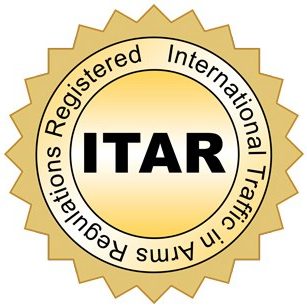
ITAR Registered #M39417
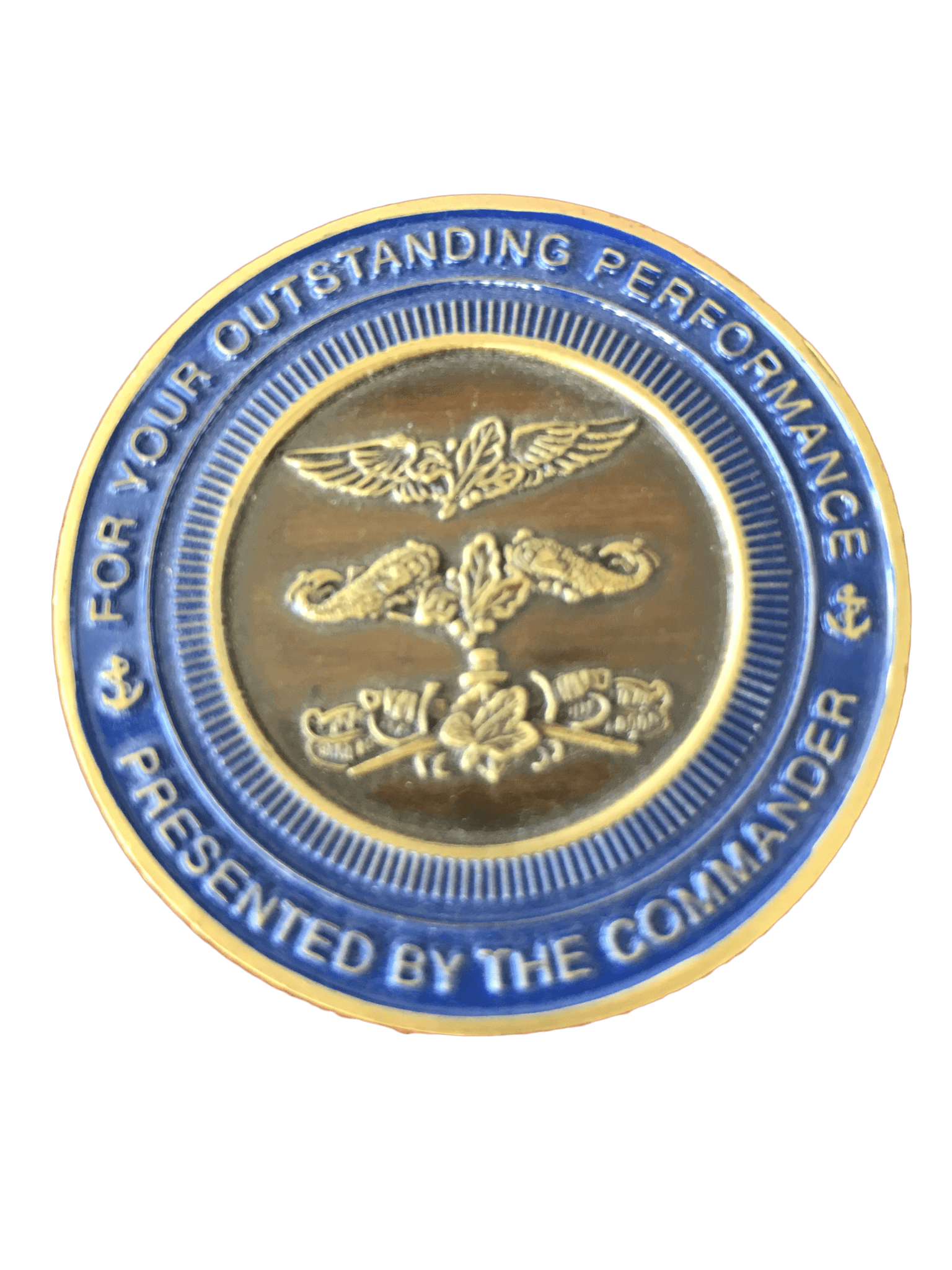
Outstanding Performance

Excellence Presented By Commander

SIBC Member
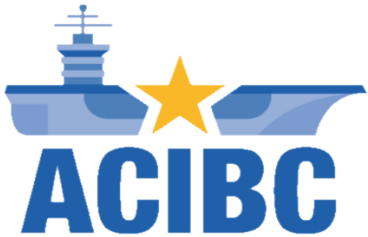
ACIBC Member
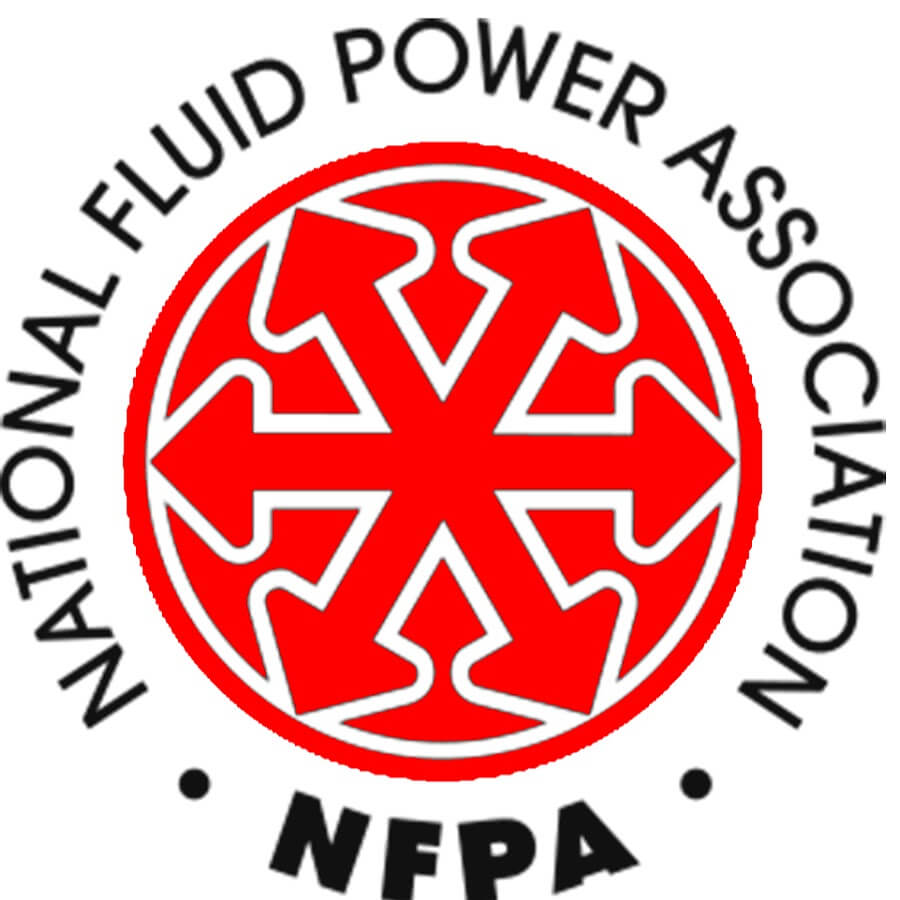
NFPA Member


